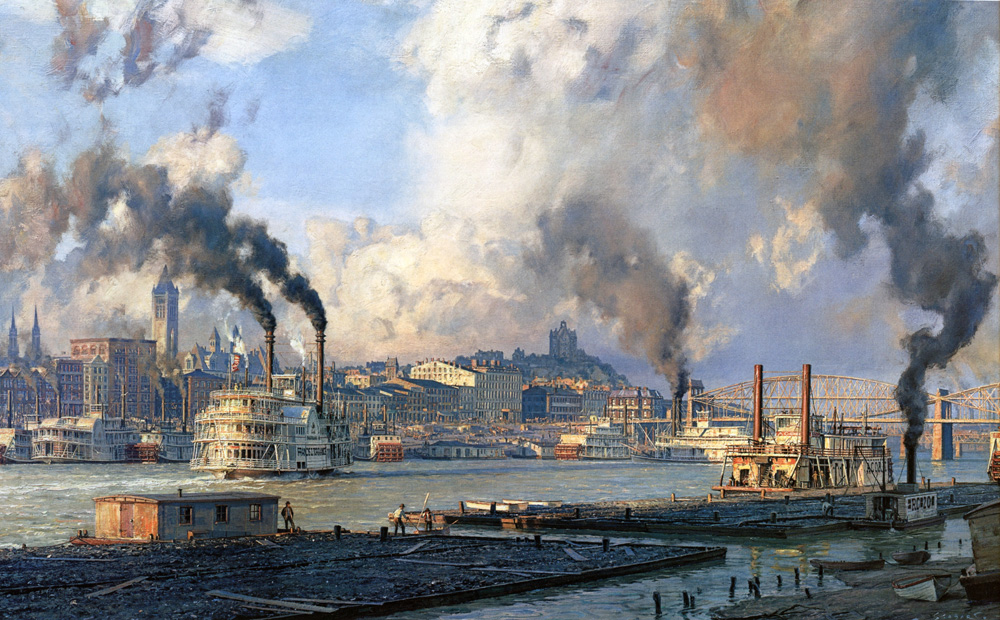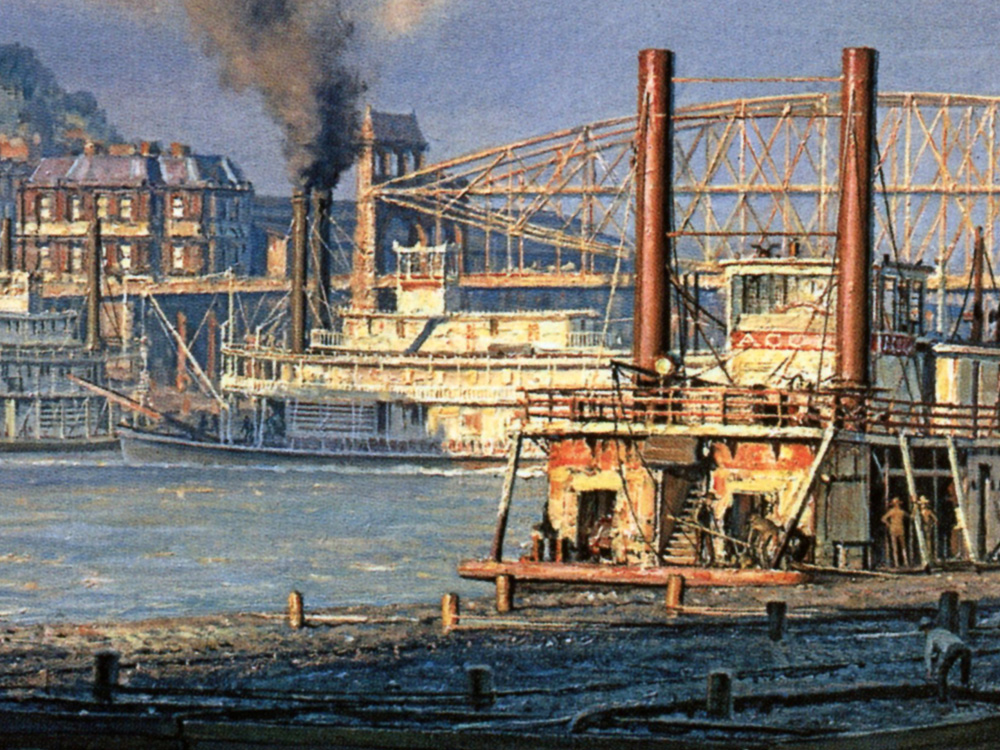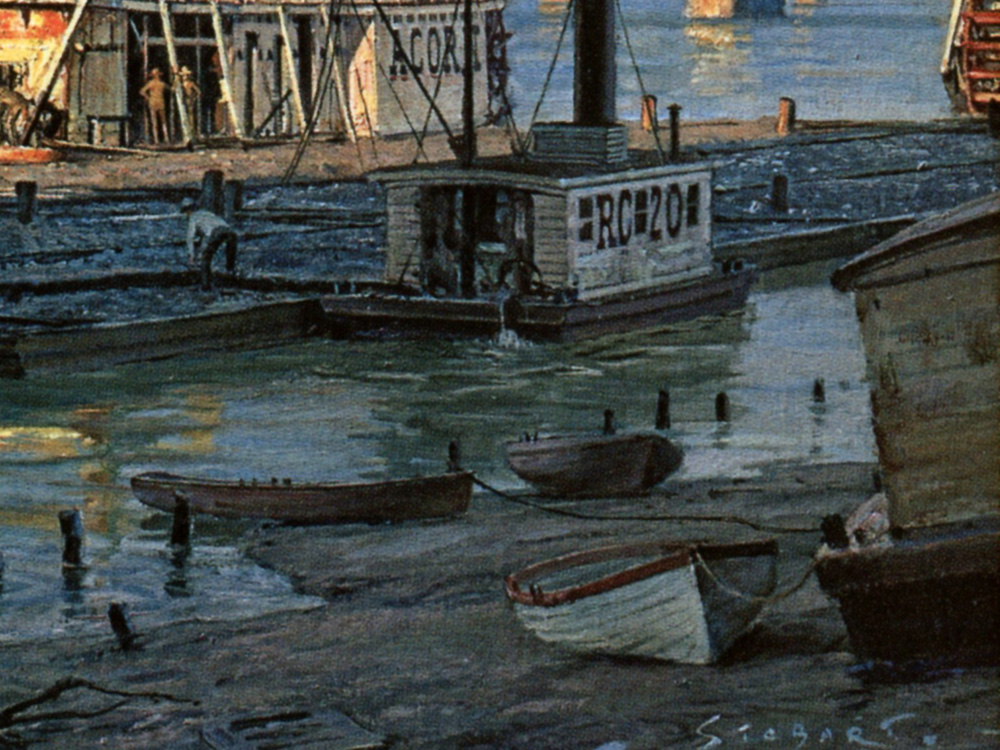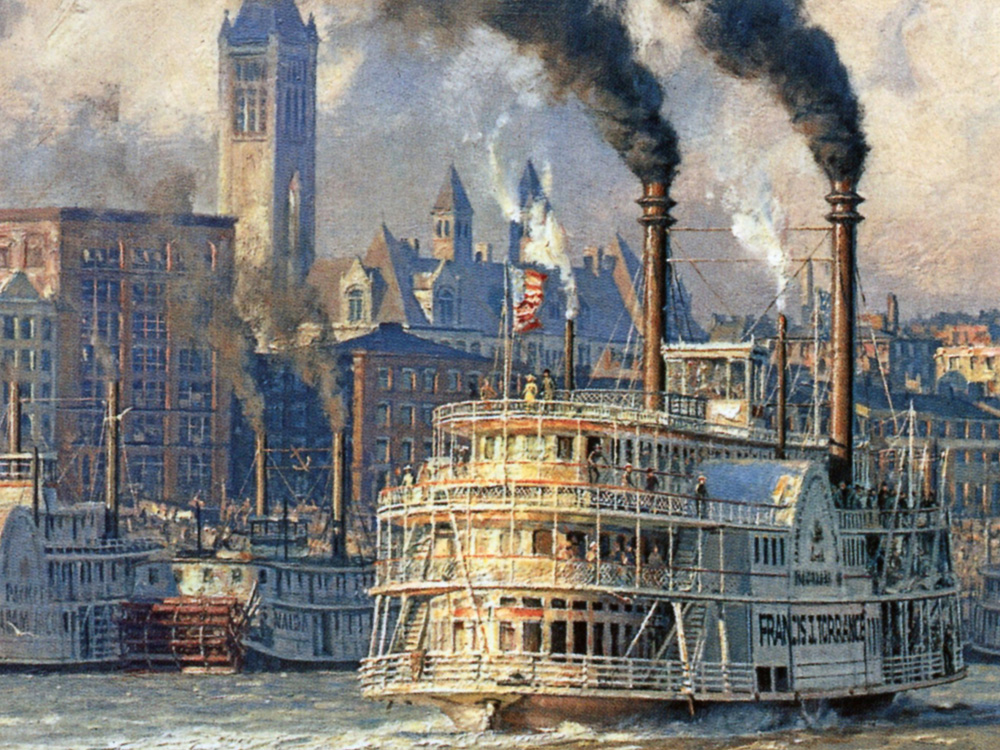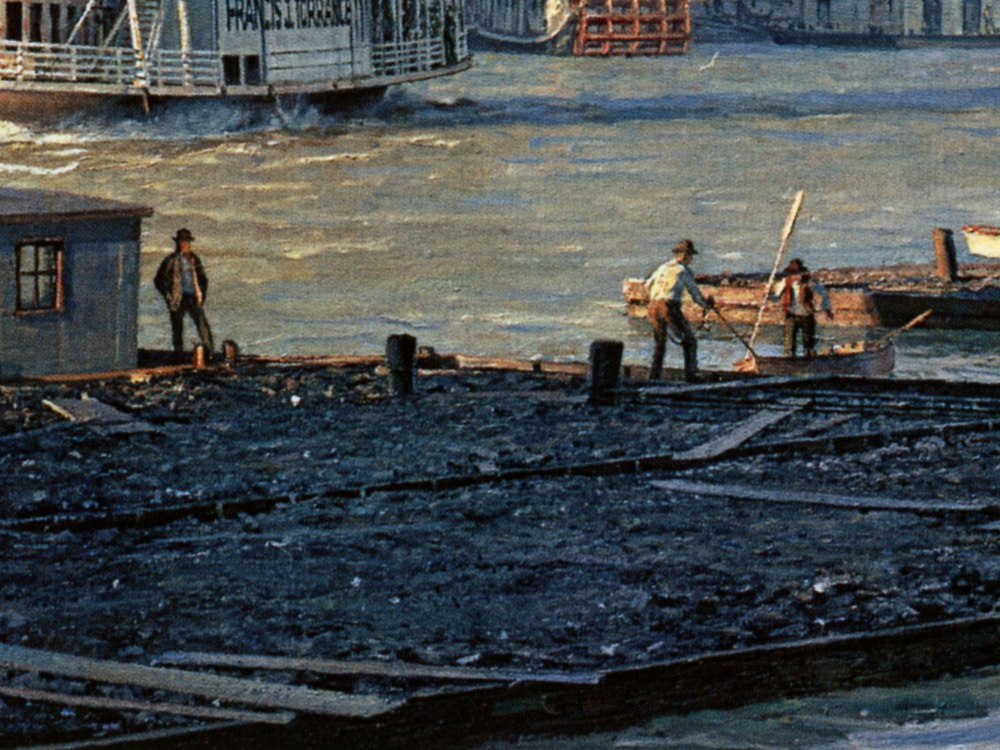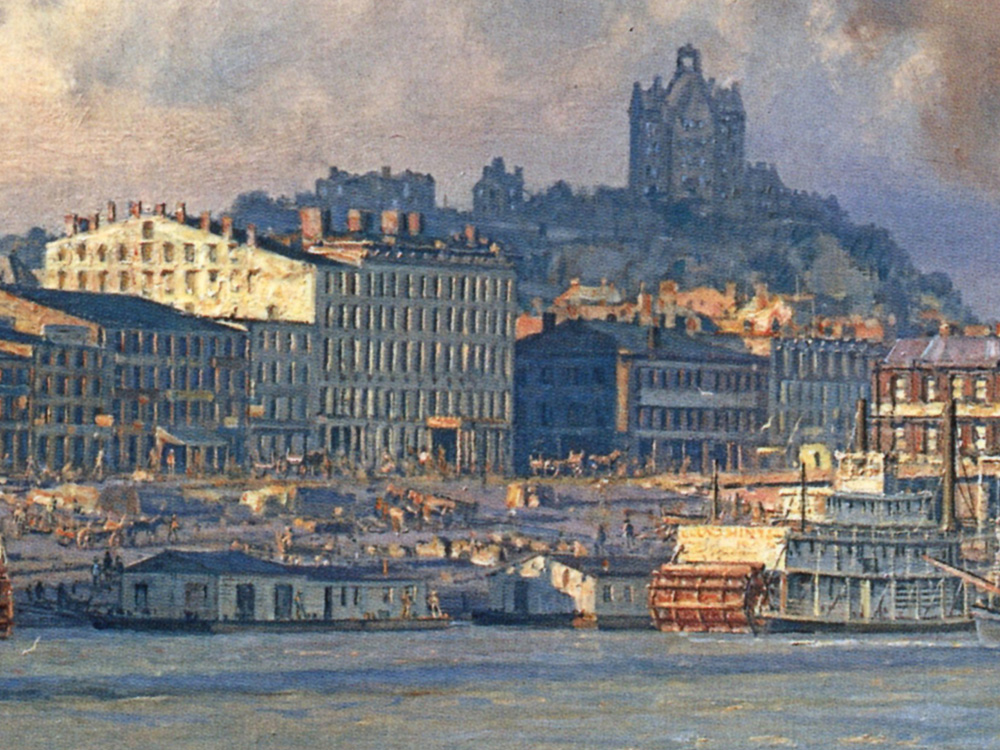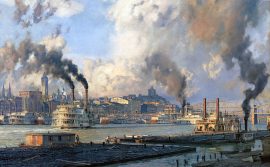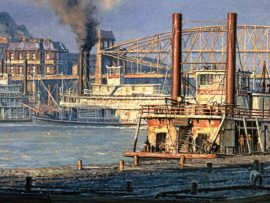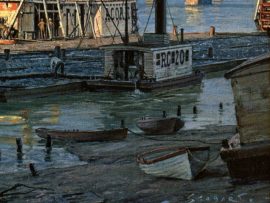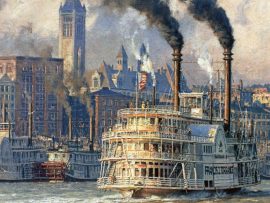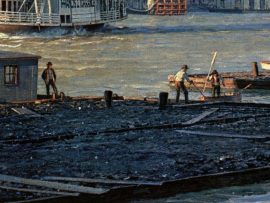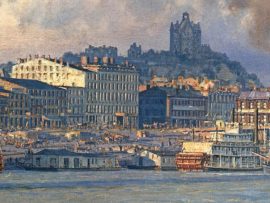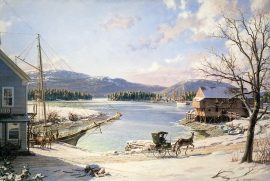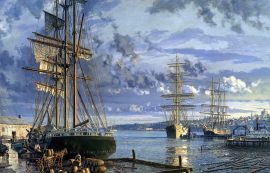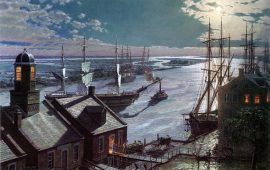Pittsburgh: The Monongahela Waterfront in 1900
$2,200.00
This painting shows the view from the foot of Mount Washington looking toward the busy public landing, the Smithfield Bridge and Duquesne University as it was at the turn of the century. Pittsburgh, a steamboat city, was the site of Fort Duquesne, constructed by the French in the mid-eighteenth century. When the British took over the fortification, it was renamed Fort Pitt, and the city was incorporated as Pittsburgh in 1816. It was the central base for the opening of the Northwest Territory, which, at that time, meant the lands between the Allegheny Mountains and the Mississippi.
It was the steamboat that brought prosperity to Pittsburgh as coal was barged to the steel mills perched along the Ohio River.
The Ohio River was first navigated by log rafts and flatboats, but that was a one-way voyage. Then there were keelboats, which were poled along the bottom, a slow, backbreaking way of moving against the current. Finally, a group of enterprising Pittsburgh men headed by Nicholas J. Roosevelt, the great-granduncle of Teddy Roosevelt, commissioned a steamboat to be built by local carpenters for the sum of $38,000.
Christened the New Orleans, the steamboat began her historic voyage down the Ohio River from Pittsburgh in 1811, four years after Robert Fulton headed up the Hudson in his Clermont. Along the route of the three-month voyage (the New Orleans moved at only three knots), a strong earthquake occurred. There were earth rumblings, changes of the water level, and landslides. The surrounding earth changed so drastically that for about two hours the Mississippi reversed its course: it ran upstream to fill in the new basins.
As the New Orleans approached several riverfront towns, residents, stunned by the earthquake, pleaded for a ride downstream to safety, but when they eyed the puffing steamboat closely, they became more afraid of the “fiery watercraft” than of another violent earthquake.
| Weight | 6.00 lbs |
|---|---|
| Catalog: | Stobart-126 |
| Artist: | John Stobart |
| Dimensions: | 19 3/4" x 33" |
| Edition: | 750 |

